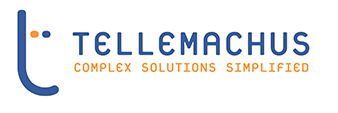Information
-
Audit Title
-
Document No.
-
Client / Site
-
Conducted on
-
Prepared by
-
Location
-
Personnel
Reported SEA - Audit Definition of a significant event; 'Any event thought by anyone in the team to be significant in the care of patients or the conduct of the practice''.
-
Start date of the SEA:
-
Add signature
Stage 1 - Awareness and prioritising a Significant Event Audit
-
Does the practice have a disignated person(s) who can be consulted to make a judgement on whether a specific significant event should be formally audited immediately, or be dealt with in a simpler way?
-
1.1 -Name of designated person(s):
-
1.2 - Description of the SEA:
-
1.3 - SEA Category:
- Clinical
- Clinician
- Leadership
- Managerial
- Patient
- Team
-
1.4 - Could the incidence have been prevented?
Stage 2 - Information gathering
-
2.1 - What happened (summary)?
-
2.2 - How it happened:
-
2.3 - Why it happened (summary):
-
2.4 Evidence Collected:
-
2.5 Evidence:
Stage 3 - The facilitated team-based meeting
-
3.1 - Is the SEA part of the monthly practice meetings?
-
3.2 - Is the meeting in addition to the routine practice meetings due to the urgency of the event?
-
3.3 - Is there a named nominated facilitator?
-
3.4 - Aims and process of the discussion:
-
3.5 - Summary of Findings:
Stage 4 - Analysis of the significant event
-
4.1 - What happened (in detail)?
-
4.2 - Why did it happen (in detail)?
-
4.2.1 - Main Reasons:
-
4.2.2 - Underlying Reasons:
-
4.3 - What has been learnt?
-
4.4 - Did the event occur due to a lack of knowledge and training?
-
4.5 - Could the event have been prevented if the system s and/or procedures?
-
4.6 - Was the event due to a lack of team work?
-
4.7 - Was the event due to a lack of effective communication?
-
4.8 - Has the care and service provided been shown to be exemplary (eg team-based effort in the successful resuscitation of a patient)?
-
4.9 - is no action required?
-
4.10 - Has a learning need been highlighted?
-
4.11 - Has a learning point been highlighted (eg a protocol which requires altering)?
-
4.12 - Is a conventional audit required?
-
4.13 - Is there a need for immediate action/change?
-
4.14 - Is there a need for further investigation and an in-depth SEA required (eg in the event where multiple organisations are involved)?
-
4.15 - is the information going to be shared?
-
Information to be shared with:
Stage 5 - Agree, implement and monitor change
-
5.1 - What actions have been agreed upon?:
-
5.2 - How and when will the changes be implemented?:
-
Select date
-
5.3 - How will the changes be monitored?:
Stage 6 - Write it up
-
Additional information not already mentioned:
Stage 7 - Report, share and review
-
7.1 - Is one or more of the following to receive a copy of this SEA?
-
7.2 - How many of the following will be sent a copy?
- 1
- 2
- 3
- 4
- 5
- 6
- 7
- 8
- 9
- 10
- 11
- 12
-
7.2.1 - Patient and/or carer?
-
7.2.2 - Educational peer reviewers?
-
7.2.3 - Care Quality Commission (CQC) Assessors/reviewers?
-
7.2.4 - General Dental Practice (GDP) appraisers?
-
7.2.5 - British Dental Association (BDA) Good Practice assessors?
-
7.2.6 - Clinical governance assessors?
-
7.2.7 - Primary Dental Care (PCT) Cluster assessor/advisor?
-
7.2.8 - General Dental Council (GDC) assessor?
-
7.2.9 - National Patient Safety Agency (NPSA)?
-
7.2.10 - Health & Safety Executive?
-
7.2.11 - National Radiographic Practice Board (NRPB)?
What was effective about this SEA:
Completed:
-
Select date
-
Add signature












